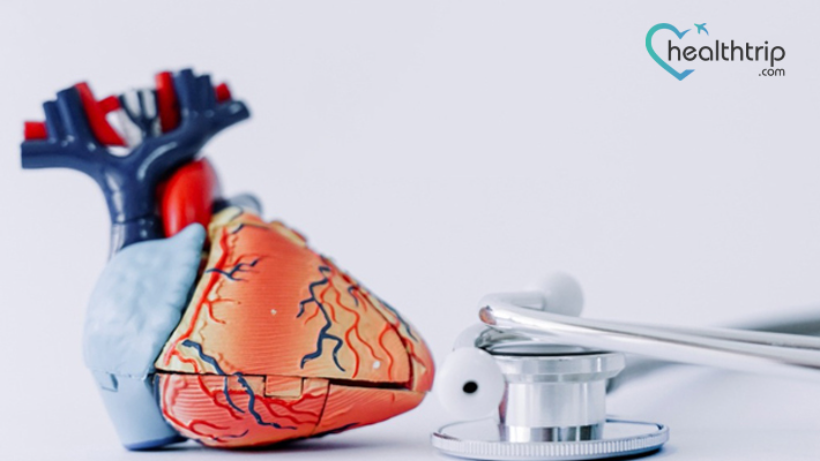
Bypass Surgery: Types and Techniques Explained
02 May, 2023
Bypass surgery, also known as coronary artery bypass grafting (CABG), is a surgical procedure used to treat coronary heart disease. It involves creating a new pathway, or bypass, for blood to flow around a blockage in one or more of the coronary arteries that supply blood to the heart. This article will provide an in-depth explanation of the types and techniques of bypass surgery.
Types of Bypass Surgery
Transform Your Beauty, Boost Your Confidence
Find the right cosmetic procedure for your needs.

We specialize in a wide range of cosmetic procedures

There are several types of bypass surgery, which are categorized based on the number of bypass grafts performed and the type of graft used.
Single Bypass Surgery
In this type of surgery, only one graft is performed, usually using a section of a vein from the leg or an artery from the chest. The bypass graft is connected to the blocked coronary artery, allowing blood to flow around the blockage.
Double Bypass Surgery
In double bypass surgery, two bypass grafts are performed, usually using both an artery and a vein. This allows blood to bypass two blocked coronary arteries.
Triple Bypass Surgery
Most popular procedures in India
Total Hip Replacemen
Upto 80% off
90% Rated
Satisfactory

Total Hip Replacemen
Upto 80% off
90% Rated
Satisfactory

Total Hip Replacemen
Upto 80% off
90% Rated
Satisfactory

ANGIOGRAM
Upto 80% off
90% Rated
Satisfactory

ASD Closure
Upto 80% off
90% Rated
Satisfactory

Triple bypass surgery involves performing three bypass grafts, usually using a combination of arteries and veins. This allows blood to bypass three blocked coronary arteries.
Quadruple Bypass Surgery
In quadruple bypass surgery, four bypass grafts are performed, usually using a combination of arteries and veins. This allows blood to bypass four blocked coronary arteries.
Techniques of Bypass Surgery
There are two main techniques of bypass surgery: on-pump and off-pump.
On-Pump Bypass Surgery
In on-pump bypass surgery, the heart is temporarily stopped and a heart-lung bypass machine is used to maintain blood flow and oxygenation to the body. The surgeon makes a large incision in the chest and separates the breastbone to access the heart. The blocked coronary artery is identified, and the bypass graft is connected to the artery using sutures. Once the graft is in place, the heart is restarted, and the chest is closed.
Off-Pump Bypass Surgery
Off-pump bypass surgery, also known as beating-heart surgery, is performed while the heart is still beating. This technique does not require the use of a heart-lung bypass machine. Instead, the surgeon uses specialized equipment to stabilize the area of the heart where the bypass graft will be attached. A small incision is made in the chest, and the graft is attached to the blocked coronary artery. This technique may be used in patients who are at high risk for complications from on-pump bypass surgery.
Hybrid Bypass Surgery
In hybrid bypass surgery, the surgeon performs a combination of on-pump and off-pump bypass surgery. The procedure begins with the surgeon making a small incision in the chest and performing off-pump bypass surgery on one or more blocked coronary arteries. Once the off-pump bypass surgery is complete, the surgeon switches to on-pump bypass surgery to complete the remaining bypass grafts.
Endoscopic Bypass Surgery
Endoscopic bypass surgery is a minimally invasive technique that uses small incisions and specialized instruments to perform the bypass surgery. The surgeon makes several small incisions in the chest and inserts a tiny camera and surgical instruments into the chest cavity. The camera allows the surgeon to view the heart and blood vessels on a monitor. The bypass grafts are then performed using sutures or a specialized stapling device.
Robotic-Assisted Bypass Surgery
Robotic-assisted bypass surgery is a minimally invasive technique that uses a robotic arm to perform the bypass surgery. The surgeon sits at a console and controls the robotic arm, which is equipped with specialized instruments and a camera. The camera provides a three-dimensional view of the heart and blood vessels, and the instruments are used to perform the bypass grafts.
Recovery from Bypass Surgery
Recovery from bypass surgery varies depending on the type of surgery performed and the patient's overall health. In general, patients who undergo bypass surgery can expect to spend several days in the hospital for monitoring and recovery. During this time, the patient will be closely monitored for any signs of complications, such as bleeding, infection, or heart rhythm abnormalities.
After being discharged from the hospital, the patient will need to follow a strict regimen of medications, diet, and exercise to ensure proper healing and reduce the risk of future heart problems. This may include taking medications to control blood pressure, cholesterol levels, and blood sugar, as well as participating in a cardiac rehabilitation program to help improve physical function and reduce the risk of future heart problems.
It is important for patients to closely follow their doctor's instructions and attend all follow-up appointments to ensure proper healing and long-term success.
Risks and Complications of Bypass Surgery
Like all surgical procedures, bypass surgery carries a risk of complications. Some of the most common risks and complications associated with bypass surgery include:
- Bleeding
- Infection
- Heart attack
- Stroke
- Blood clots
- Kidney damage
- Nerve damage
- Breathing problems
- Chest pain
While the risk of complications from bypass surgery is relatively low, it is important for patients to discuss the potential risks and benefits of the procedure with their doctor before making a decision.
Conclusion
Bypass surgery is a common and effective treatment for coronary heart disease. By creating a new pathway for blood to flow around a blockage in the coronary arteries, bypass surgery can help reduce symptoms, improve quality of life, and reduce the risk of future heart problems. There are several types and techniques of bypass surgery available, and patients should work closely with their doctor to determine the best option for their individual needs. With proper care and management, patients who undergo bypass surgery can expect a successful outcome and improved overall health.
Wellness Treatment
Give yourself the time to relax
Lowest Prices Guaranteed!

Lowest Prices Guaranteed!





